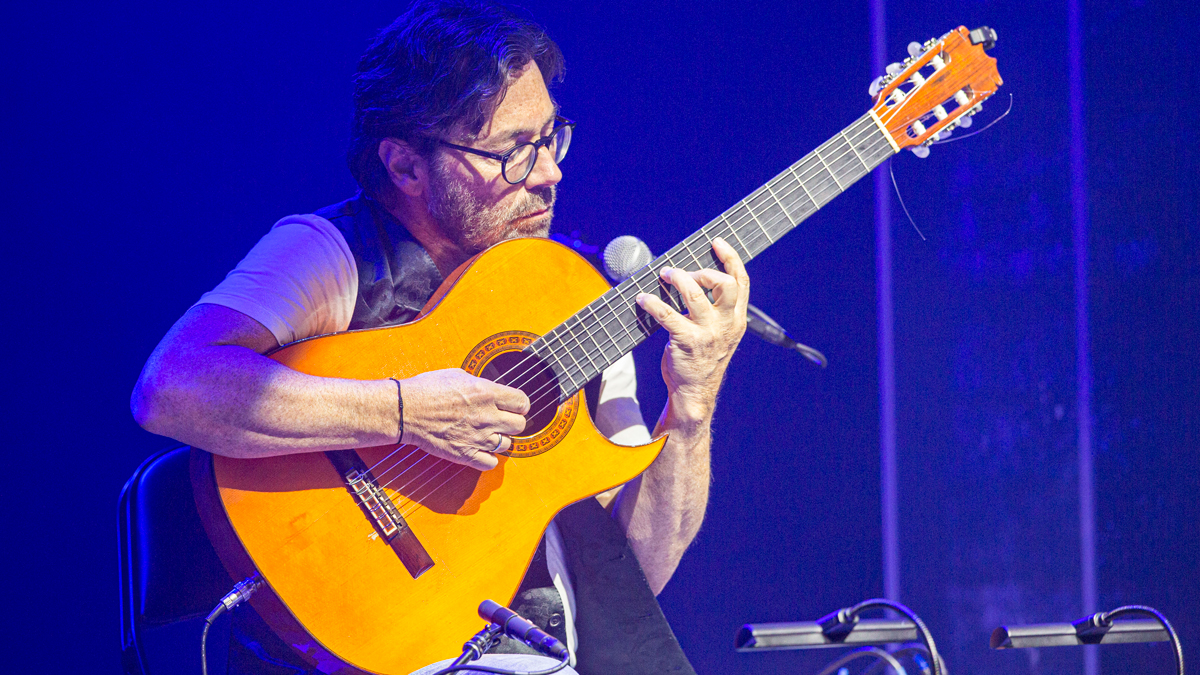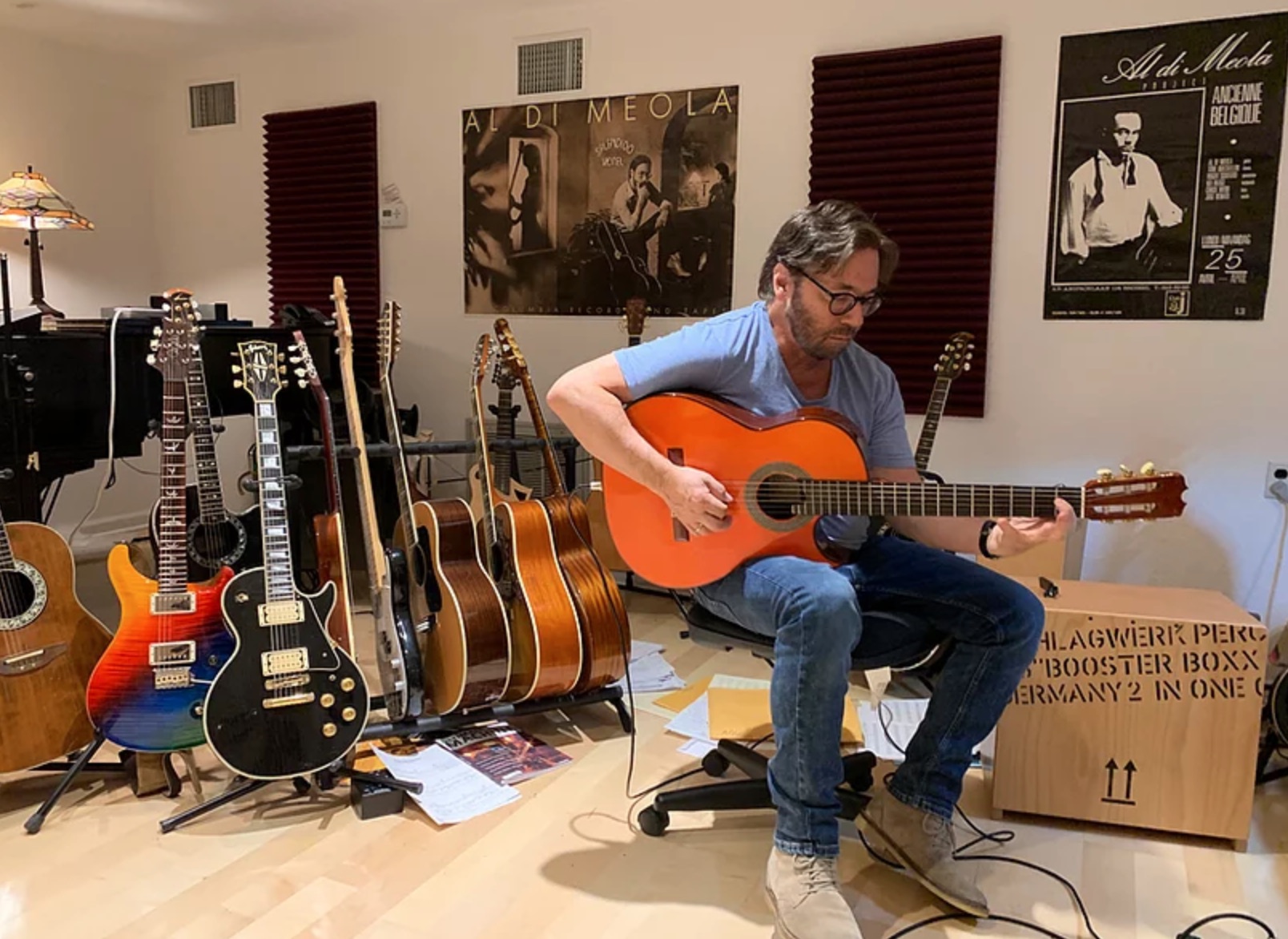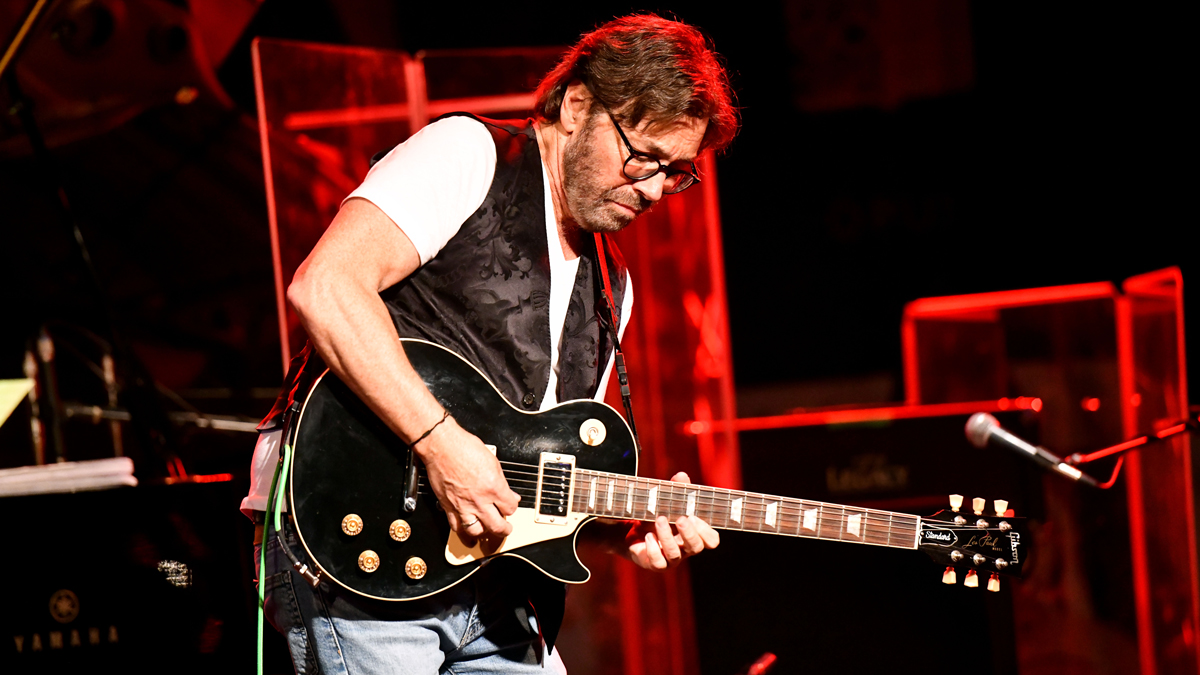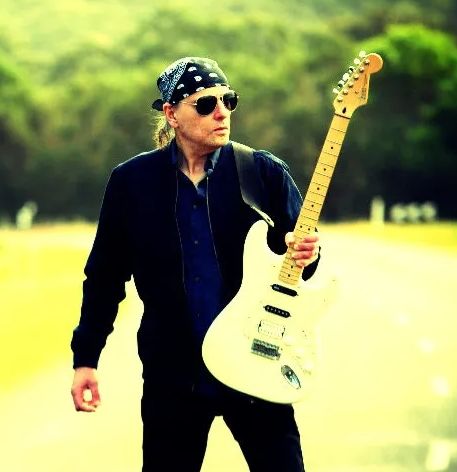Al Di Meola: "I see a lot of young players online with such super-phenomenal technique – but very rarely do I see it in the framework of a composition"
The fusion guitar master shares his thoughts on the next generation of players, maintaining speed on the fretboard, and what makes his '59 Gibson Les Paul the best-sounding guitar he's ever played

Best of 2022: Al Di Meola needs no introduction to the guitar-playing masses. His complex chordal figures, super speed-infused guitar solos, and six-string sonic intensity has influenced hordes of guitarists ever since Di Meola first burst upon the scene in 1974 as a 19-year-old guitarist for jazz fusion exponents Return To Forever.
But it was when he ventured out into a solo career that began with his 1976 debut outing, Land of the Midnight Sun, that Di Meola's Latin charged guitar mastery really began his ascension to the top of the guitar playing establishment, in turn cementing his reputation as one of the titans of the guitar world.
Now almost 50 years later, Al Di Meola remains at the top of his game. He recently sat down with Guitar World to discuss his evolution as a composer, his approach to practising and why his Latin fused music fuels his creativity.
In what what ways do you think your songwriting process has evolved during the course of your career?
“I ask myself the same question sometimes. If self-analysed, I do see an interesting evolution of advanced writing. I had great inspiring artists like Astor Piazzolla and Chick Corea that were sometimes more importantly viewed as the great composers they were, more than just the great players.
“At my age now, I like to see myself viewed more as the composer-guitarist than any other configuration of words or titles. When I started out, I was the guitarist and then I slowly became a composer, and now after 35 solo albums, I’ve now switched the titles.”
Do you still adhere to a strict practice routine after all these years, especially when it comes to speed?
Get The Pick Newsletter
All the latest guitar news, interviews, lessons, reviews, deals and more, direct to your inbox!
“I do love to practice. Practicing keeps your fingers nimble and practicing speed or velocity and difficult passages is very important. I feel though that if you stop practicing, you can actually slow down, so it’s a constant, almost a struggle to maintain the speed that was once there in my 20s. But it takes a lot of hard work, so I do work on those aspects, though not so much as I work on my writing capabilities, but it is all important stuff.”
Are there any finger exercises you’d recommend to guitarists?
“Just about anything that I write is a finger exercise unto itself. I practice a lot of the difficult passages that I write, and those are enough of a finger exercise for me for the most part.”
Your technique has inspired many players to spend hours with a metronome. However, some people misinterpret speed and technique as something that prevails over the actual substance of the song. What are your thoughts on this topic?
“I see a lot of young players online with such super-phenomenal technique and in many cases, super-phenomenal lines, which are just incredible and very impressive, but very rarely ever do I see it in the framework of a composition, especially an original composition. So, it’s how it’s all applied.
“It’s one thing to come up with a lot of fast interesting lines which in itself is interesting, but it’s another thing to see how it will be applied within the context of a composition, and that is something that doesn’t go hand in hand. It’s like a whole separate side of a musician that you might not even have. You might just be a hot gun. To write music is a whole other profession, and that is something that eventually you’ll get to as you the player matures in some cases, but not all cases.”

When it comes to your current gear setup, what does it consist of?
“I play mostly acoustic guitar and I’m very happy using this one amp called AER, which is made in Germany. I like the two models but I prefer the smaller acoustic one. I use an [Electro-Harmonix] Oceans 11 reverb with that, too.
“I kind of shied away from my pedalboard because I used to a use a Roland VG-88, and at times I will go back to the VG-88 which enables me to MIDI interface some sounds with my nylon acoustic – a signature model made by Felipe Conde in Madrid. It combines an RMC pickup and it also enables me to also activate sounds that I can blend in with a foot pedal from the VG-88 unit.
“For electric, which I’m starting to now enter back into the picture, I found this new incredible-sounding amp made by a company that’s called Mad Professor, an amp that is made in England. It’s one of the best sounding amps I’ve heard in the last 20 or 30 years.”
Do you have a large guitar collection?
“I do have a large collection, but I’m not a collector; I’m more of an acquirer. I just acquired these guitars, I didn’t go out with the intention of becoming a collector for investment purposes. But I do have some that I consider to be noteworthy.”
What would those guitars be?
“My 1971 Les Paul Custom, which was the one I used with Return To Forever and on all of those records and it’s also on Land of the Midnight Sun, my first record and my second record, Elegant Gypsy, with the guitar also on the cover of that album. There’s a lot of history with that guitar and is probably the most historic guitar because of its connection with my early start in the business.
I’ve compared my 1959 Les Paul Custom to other Les Pauls and it truly is the best-sounding one. No doubt about it
“As time went on, I acquired some other guitars, like a 1959 Les Paul Custom which is considered the holy grail of the best-sounding of all Les Pauls. I’ve compared that guitar to other Les Pauls and it truly is the best-sounding one. No doubt about it. Mostly it comes down to the wood they used, which was already aged when it was built.
“I also have several Conde Hermanos guitars which I find to be really valuable as well. I also have a 1948 Martin steel-string, which is an incredible guitar. It is a dark-sounding but super-sustaining D-18.”
You've never been afraid to explore different genres over the course of your career. How important do you think it is for a guitarist to be well-versed in playing different musical styles?
“If you feel you want to do that and you have a certain slant on a different style, there would be nothing stopping a musician from doing anything they wanted to do really. If you’re doing something you don’t like, then that’s a good gauge for knowing that you shouldn’t be doing it.
“Exploring other genres is fine if you feel like its something you want to do. I’ve always primarily infused Latin rhythms from all different kinds of sub categories within the Latin family from the Tango to the Islands like Cuba and Puerto Rico which have a certain kind of Latin sound. Then there is the whole other side of the European Latin thing like Flamenco. And then there’s also South America, like Brazil which is like night and day different to the Argentine tango; there’s no relation whatsoever. But it’s still a form of Latin music.
“So, all of those sub-idioms under the title of Latin music have always made their way into a large majority of my own style of writing along with some Middle eastern influences, as I love some of the Middle Eastern phrasing and scales.”

Looking back to your first four solo albums, which cemented your guitar reputation, how do you view them today, some 40 years later?
“I’m really proud of them because I made some very good decisions very early on. Had I made mistakes in my decisions, I might not have had as you say, cemented my guitar reputation, because I used the best.
“Steve Gadd was the best. I used Jaco Pastorius, the best too. Stanley Clarke, Chick Corea, Jan Hammer, Anthony Jackson on bass with a pick, they’re the best. I was in a very good position to get the best players and as a result, the rehearsals were never super-long, as these guys were used to doing recording sessions where they’d go in and just read and record and then go onto the next session.
“Every one of those players were supreme readers and what they brought to the table was a lot. I could write whatever and whatever I wrote, because of their experience and expertise and their feel, they would bring something to the music. It wouldn’t just be what I wrote. And those are the kind of players that are the most impressive. So, on those first four, five and even six albums, I really made the right decision by using mostly the same combinations of those guys.”
- Al Di Meola's latest release with Paco de Lucía and John McLaughlin, Saturday Night in San Francisco, is out now via Impex Records.
- Al Di Meola tours Australia in October: Melbourne Recital Centre (18), Brisbane Fortitude Music Hall (19), Sydney State Theatre (20).
Joe Matera is an Australian guitarist and music journalist who has spent the past two decades interviewing a who's who of the rock and metal world and written for Guitar World, Total Guitar, Rolling Stone, Goldmine, Sound On Sound, Classic Rock, Metal Hammer and many others. He is also a recording and performing musician and solo artist who has toured Europe on a regular basis and released several well-received albums including instrumental guitar rock outings through various European labels. Roxy Music's Phil Manzanera has called him, "... a great guitarist who knows what an electric guitar should sound like and plays a fluid pleasing style of rock." He's the author of Backstage Pass: The Grit and the Glamour.
“My guitar tech ran in and said, ‘Hey, you want to meet Pete?’ I was too scared”: The Smithereens’ love affair with The Who goes way back – yet when guitarist Jim Babjak got the chance to meet Pete Townshend, he turned it down
“Every tour was the best I could have done. It was only after that I would listen to more Grateful Dead and realize I hadn’t come close”: John Mayer and Bob Weir reflect on 10 years of Dead & Company – and why the Sphere forced them to reassess everything




![John Mayer and Bob Weir [left] of Dead & Company photographed against a grey background. Mayer wears a blue overshirt and has his signature Silver Sky on his shoulder. Weir wears grey and a bolo tie.](https://cdn.mos.cms.futurecdn.net/C6niSAybzVCHoYcpJ8ZZgE.jpg)

![A black-and-white action shot of Sergeant Thunderhoof perform live: [from left] Mark Sayer, Dan Flitcroft, Jim Camp and Josh Gallop](https://cdn.mos.cms.futurecdn.net/am3UhJbsxAE239XRRZ8zC8.jpg)






